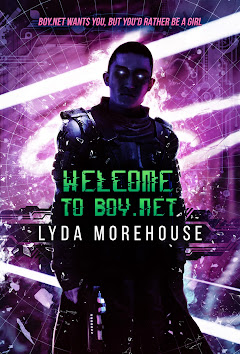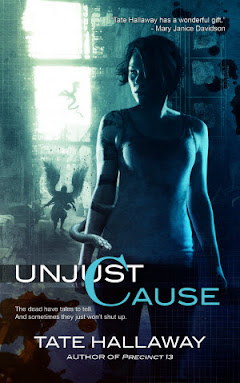Donna noted:
"I think that the problem with the Garnet series is that the books cost $15.00 dollars. If you come out with the series in a regular paperback, they would sell real good. The problem is not your books, it is the economy."
Yeah, I actually agree with you, Donna. But this another thing that authors have very little control over, and something, I'll admit I don't really understand about the publishing industry. Trade paperback books have become very fashionable. Yet, they're more expensive (for the reader, at least,) and an awkward size.
I started my career as a paperback writer. There are some cons to it from a writer's point of view. The royalty rates are lower, you earn back a smaller percentage of the lower cover price. The print runs tend to be a lot bigger, which is a double-edge sword for the writer. On one hand, it's nice to feel important enough to have 20,000 or more copies printed. But, if they don't go out the door quickly, publishers tend to get cranky because of the tax laws that require them to pay taxes on inventory in warehouses. That can lead, as it did with my science fiction series, to books going out of print only a year or so after they were published. Which, of course, means that it's nearly impossible to build up momentum on viral/word-of-mouth publicity. Libraries don't like to buy/stock them because they're easily damaged and often a pain to replace (see above re: quickly going out of print.)
But as a long time reader, I much prefer paperback novels for all the reasons they're a pain for publishers and writers. They're cheap! They fit in my purse/backpack/back pocket. They're disposable -- I don't get quite as mad if I lose one, drop it in the bathtub, loan one to a forgetful friend, etc.
Trade paperbacks, on the other hand, are likely cheaper to produce, if only because the print runs tend to be smaller (and so you avoid all those copies gathering dust in warehouses), they're slightly more durable, and, frankly, everyone gets a higher return on their investment because they cost those two or three dollars more. I think, too, that publishers keep the books in print longer because they do very small addititional print runs of a 1,000 or so copies.
But, yes, it also means people buy fewer of them because they're a weird size and that much more expensive. It's a kind of circular logic kind of problem, no?
The good news is that the first book in the Garnet Lacey series, Tall, Dark & Dead, will be coming out in mass market paperback next December from Berkley Sensation if all continues apace.


